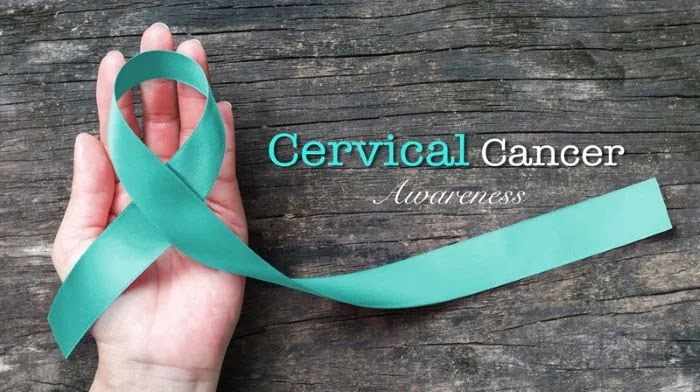Optimize Your Well-Being: Unveiling the Advantages of Walking for Calorie Burn
Optimize Your Well-Being: Unveiling the Advantages of Walking for Calorie Burn
Walking, a seemingly simple act holds the key to unlocking many health benefits. From mental well-being to physical fitness, the calories burned during a brisk walk contribute significantly to overall wellness. In this article, we'll delve into the science behind walking, set realistic fitness goals, explore the mental and physical health advantages, and provide practical tips for effective walking. Join us on this journey to discover the transformative power of calories burned through walking.
 |
| Stock photo: Jogging |
I. Introduction
Walking has long been regarded as a fundamental exercise for maintaining a healthy lifestyle. Beyond the basic act of putting one foot in front of the other, walking has the potential to positively impact both mental and physical well-being. In this article, we will explore the benefits of calories burned while walking and how this simple activity can be a gateway to improved overall health.
II. Understanding the Science
A. The Holistic Impact of Walking
Walking is more than just a way to get from point A to point B; it's a holistic exercise that engages various muscle groups and promotes cardiovascular health. As we walk, our bodies burn calories, providing a foundation for weight management and overall fitness.
B. Significance of Calories Burned
Understanding the significance of calories burned during walking involves recognizing how this energy expenditure contributes to weight loss, improved metabolism, and increased energy levels. It's not just about the steps we take but also about the calories we burn in the process.
III. Setting Fitness Goals
A. Realistic Walking Goals
To harness the benefits of walking, it's crucial to set realistic fitness goals. Whether it's achieving a daily step count or focusing on a specific distance, having clear objectives enhances motivation and ensures consistent engagement with this accessible form of exercise.
B. Tracking Progress through Calories
Monitoring calories burned provides a tangible way to track progress toward fitness goals. With the help of fitness trackers and apps, individuals can gain insights into their walking habits, allowing for adjustments to optimize calorie burn and overall wellness.
IV. Mental Health Benefits
A. Walking for Mental Well-Being
The connection between walking and mental health is profound. Engaging in regular walks has been linked to reduced stress, improved mood, and enhanced cognitive function. The calories burned during these walks play a crucial role in releasing endorphins, contributing to a positive mental state.
B. Calories Burned as Mood Boosters
The act of burning calories during walking acts as a natural mood booster. As the body expends energy, it releases chemicals in the brain that alleviate stress and promote a sense of well-being. This dual impact on mental health makes walking an effective strategy for holistic wellness.
 |
| Stock Photo: Jogging |
V. Physical Health Advantages
A. Impact on Physical Fitness
The physical health benefits of walking are extensive. From cardiovascular health to improved joint flexibility, walking is a low-impact exercise suitable for individuals of all fitness levels. The calories burned during a walk contribute directly to weight management and overall physical well-being.
B. Specific Benefits of Calories Burned
Breaking down the specific benefits of calories burned through walking, we find that it supports weight loss, enhances cardiovascular function, and aids in maintaining a healthy body mass index (BMI). The combination of these factors makes walking an ideal exercise for those seeking holistic health improvements.
VI. Techniques for Effective Walking
A. Proper Walking Techniques
Maximizing the impact of walking involves adopting proper techniques. This includes maintaining good posture, swinging the arms naturally, and taking consistent strides. These techniques not only optimize calorie burn but also reduce the risk of injuries, ensuring a sustainable walking routine.
B. Enhancing Calorie Burn
To enhance calorie burn, individuals can incorporate interval training into their walks. Alternating between brisk walking and periods of increased intensity challenges the body, leading to a higher calorie expenditure. This method adds variety to the walking routine while maximizing the benefits.
VII. Incorporating Walking into Daily Routine
A. Creative Integration
In today's busy world, finding time for dedicated exercise can be challenging. However, incorporating walking into daily routines offers a practical solution. Whether it's walking to work, taking the stairs, or having walking meetings, small adjustments can lead to significant increases in calorie burn.
B. Maximizing Everyday Activities
Beyond scheduled walks, everyday activities contribute to overall calorie burn. Simple tasks like gardening, household chores, and playing with pets can all contribute to a more active lifestyle. Recognizing these opportunities adds up to substantial calorie expenditure over time.
VIII. Tools for Tracking Progress
A. Fitness Apps and Technology
In the digital age, numerous fitness apps and devices are available to help individuals track their walking habits and calories burned. These tools provide real-time data, allowing users to make informed decisions about their fitness routines and optimize their efforts for maximum impact.
B. Benefits of Technology Integration
The benefits of incorporating technology into fitness routines extend beyond tracking progress. Many apps offer personalized insights, community support, and even virtual challenges, enhancing the overall experience of walking and calorie tracking.
IX. Nutrition and Walking
A. The Role of Nutrition
While walking contributes significantly to wellness, the role of nutrition cannot be overlooked. A balanced diet supports the body's energy needs and complements the calories burned during walks. Nutrient-rich foods provide the necessary fuel for optimal performance and recovery.
B. Nutrition's Impact on Calories Burned
Understanding the relationship between nutrition and walking helps individuals make informed choices. Proper fueling before and after walks ensures sustained energy levels and enhances the effectiveness of calorie burn, contributing to overall fitness goals.
X. Walking Communities
A. The Power of Community
Joining walking groups or communities adds a social dimension to this solitary activity. The sense of camaraderie and shared goals motivates individuals to stay consistent with their walking routines. Community support can be a driving force in achieving higher levels of calorie burn.
B. Motivational Aspects
Walking with others not only provides motivation but also introduces an element of friendly competition. Setting group goals and celebrating achievements together fosters a positive environment, encouraging participants to push their limits and maximize calorie burn.
 |
| Stock Photo: Jogging |
XI. Overcoming Challenges
A. Common Obstacles
Maintaining a walking routine is not without its challenges. Identifying common obstacles, such as inclement weather, time constraints, or lack of motivation, allows individuals to proactively address these issues and find solutions to stay on track.
B. Strategies for Consistency
Implementing strategies to overcome challenges involves creating a flexible walking routine, setting realistic expectations, and seeking accountability from friends or family. By acknowledging and addressing potential obstacles, individuals can build resilience and maintain consistency in their walking habits.
XII. Success Stories
A. Real-Life Transformations
The article features inspiring success stories of individuals who have experienced transformative changes through walking. From weight loss achievements to improved mental well-being, these stories serve as tangible evidence of the positive impact of walking and calories burned.
B. Encouragement for Readers
By sharing real-life success stories, the article aims to inspire readers to embark on their wellness journey. The relatability of these stories encourages individuals to take the first step towards incorporating walking into their daily lives, unlocking the potential for positive change.
XIII. Future Trends
A. Evolving Trends in Walking
As society evolves, so do fitness trends. The article explores emerging trends in walking, such as virtual walking challenges, augmented reality walking experiences, and interactive apps. These trends may shape the future landscape of walking for wellness and calorie burn.
B. Impact on Perceptions
Understanding future trends in walking provides readers with insights into how the activity may evolve. By staying informed about the latest developments, individuals can adapt their walking routines to align with evolving practices and maximize the benefits of calorie burn.
XIV. Expert Opinions
A. Insights from Experts
The article incorporates insights from fitness and wellness experts who provide valuable perspectives on the importance of walking. These experts share their knowledge on optimizing calorie burn for overall health, offering evidence-based recommendations for readers to implement.
B. Recommendations for Wellness
Expert opinions serve as a guide for readers seeking to enhance their walking routines. From personalized tips on techniques to setting realistic goals, these recommendations contribute to a comprehensive understanding of the relationship between walking, calorie burn, and holistic wellness.
In conclusion, the article highlights the transformative power of walking and the calories burned in the process. From mental health benefits to physical fitness improvements, walking emerges as a simple yet effective strategy for achieving overall well-being. As readers reflect on the information provided, the invitation is extended to embrace walking as a sustainable and accessible path to a healthier and happier life.
FAQ
Q: How much walking is considered beneficial for health?
A: The recommended amount of walking varies, but aiming for at least 150 minutes of moderate-intensity walking per week is a good starting point.
Q: Can I still benefit from walking if I have a busy schedule?
A: Absolutely! Incorporating short walks throughout the day, such as during breaks or meetings, can contribute to overall calorie burn and fitness.
Q: Are there specific diets that complement a walking routine?
A: While there's no one-size-fits-all diet, a balanced and nutrient-rich diet supports the energy needs of a walking routine, enhancing its effectiveness.
Q: How can technology enhance my walking experience?
A: Fitness apps and devices provide real-time data, personalized insights, and community support, enhancing motivation and overall engagement.
Q: Is walking suitable for all fitness levels?
A: Yes, walking is a low-impact exercise suitable for individuals of all fitness levels. It can be adapted to accommodate varying fitness goals and abilities.



Comments
Post a Comment